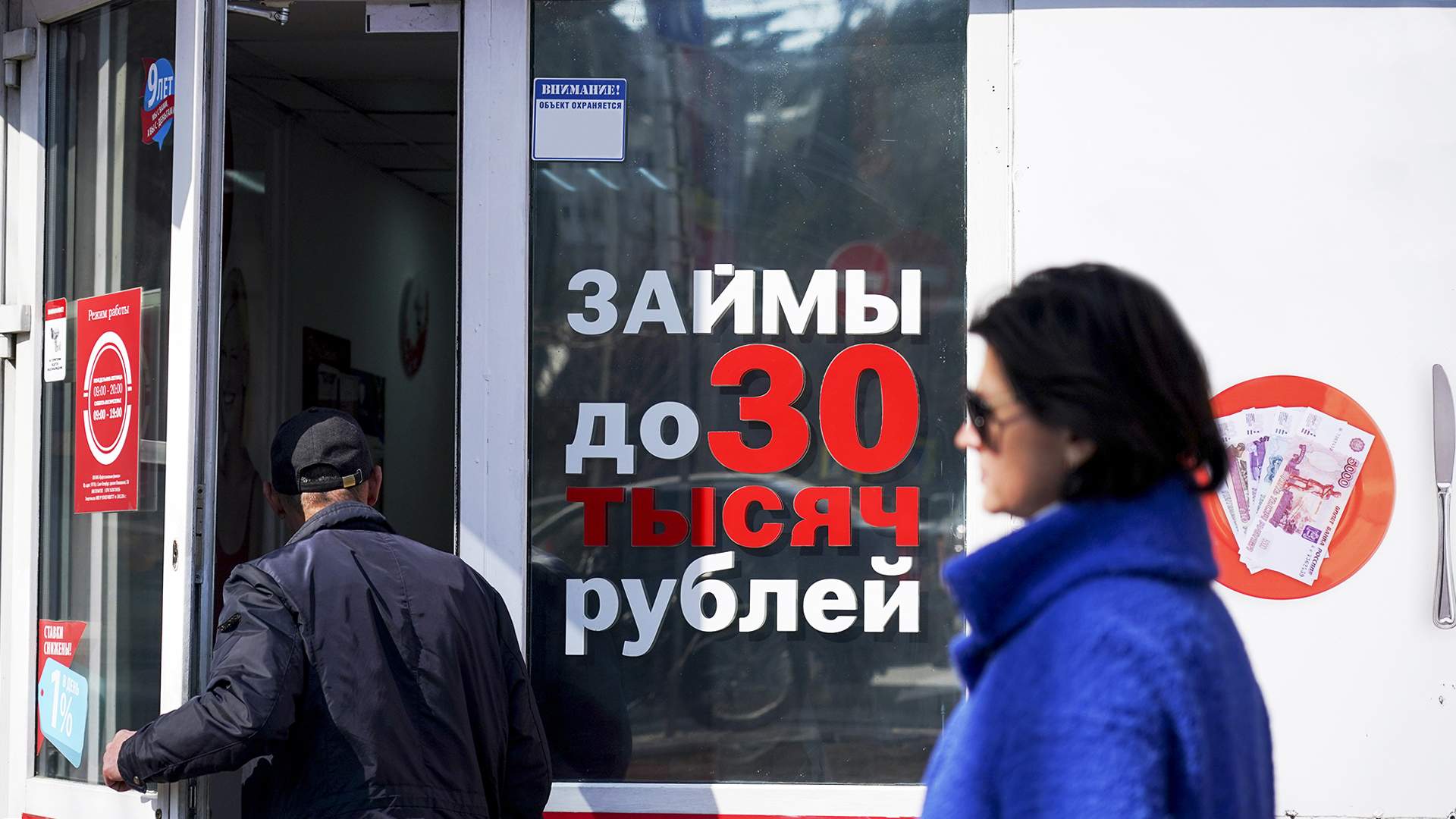Short loans: what will happen to microcredit this year

In December, the share of microloans in the total volume of loans to households reached a record. Izvestia investigatedwhat the surge in demand for short loans "until payday", how banks redirect "refuseniks" to their MFIs and what will happen in the microcredit market in 2025.
Access is limited
According to "Scoring Bureau", in December 2024, the share of loans from microfinance organizations (MFIs) in the total volume of loan disbursements rose to a record 70%. This is a record since at least 2021.
Experts primarily attribute the growth in the share of microloans to limited access to traditional banking products for many segments of the population. The speed of loan disbursement, which is characteristic of MFIs, also has an impact.
- Requirements to borrowers are becoming stricter, but the need of citizens for borrowed funds has not disappeared. This provokes more frequent application of individuals for microloans. That is, in parallel, the number of executed contracts in banks is decreasing and the number of applications to MFIs is increasing," says Yuri Isaev, an analyst of the banking sector and the market of microfinance organizations of Brobank.ru service.
Rates of microloans have not changed much during the year. The legislation sets the maximum amount at 0.8% per day. Leading MFIs offered medium-term loans (up to RUB 100 thousand for up to one year) at rates of 0.3-0.6% per day until the fourth quarter of 2024. The average amounts of short-term microloans "up to salary" during the year varied in the range of 9.5-10.2 thousand rubles. And by the end of the year, the size of the average approved loan slightly increased, reported "Izvestia" in the financial marketplace "Vyberu.ru".
Trust has grown
Experts also point out that the public's trust in this segment has grown: various regulatory restrictions imposed by the Bank of Russia on microfinance organizations have had an impact.
- In recent years, the Central Bank's policy toward microfinance organizations has been quite radical: the maximum rate and the amount of overpayments have been reduced, and the regulator's requirements regarding the collection of bad debts have been tightened. Companies using gray schemes of work were forced to leave the market, as a result of which it became more transparent," points out Anton Mikhailov, CEO of the Bankrupt-Service law firm.
Bank MFIs
The MFI sector is mainly overflowed by "refuseniks" of banks. In the banking sector in the last 12 months, due to the "tightening of the screws" in regulation, the share of rejected applications amounted to 20%. That is, banks make a positive decision for one out of five applicants, says Irina Andrievskaya, director of content and analytics of the financial marketplace "Vyberu.ru". For those who urgently need money, applying to MFIs remains the only way to get it.
At the same time, as Andrey Ponomarev, CEO of the online financial platform Webbankir, explains, the main driver of growth in loan issuance has been bank MFIs, which now account for more than half of the market.
- Due to regulatory restrictions, the level of loan approval is declining, but banks do not want to lose clients, so they redirect "rejected" traffic to their own MFIs, where the criteria for selecting borrowers are less stringent. Also, thanks to parent structures, bank MFIs have good funding, which is especially important in conditions of high key rates. Simply put, they have the means for intensive development," the analyst points out.
Affiliated MFIs have become more active within banking groups. Thus, bankers redistribute client flows. The scheme allows banks not to lose borrowers-"refusers" who do not pass the solvency "sieve" of bank underwriting for consumer loans, adds Irina Andrievskaya.
Radical changes
This trend, as experts believe, will continue in the future, but in 2025 the microloan market will slow down somewhat. This is due to new regulatory restrictions, which will noticeably affect the microfinance market
These are the law on self-loaning, reduction of the maximum amount of overpayments from 130 to 100% of the debt body, a ban on the novation of consumer loan agreements, changes in the procedure for calculating the amount of the average monthly payment of an individual under a loan (credit) agreement, the introduction of additional requirements for the formation of credit histories, lists Olesya Kiseleva, Managing Director of MFK "Lime-Loan".
One of the main innovations will be the Central Bank's ban on issuing one client more than two loans. The first stage will start in 2025, and in general the reform will last for the next three years. According to experts and market players, this key restriction will cause radical changes for the microcredit segment.
- We do not rule out a tightening of MPL indicators for each of the categories. Limiting simultaneously active loans to one is an extremely harsh measure and, in my opinion, absolutely unnecessary. Such changes may lead to inaccessibility of personal funding for consumers and ultimately to increased demand for the services of illegal lenders, - says Valery Nechaev, director of the claims department of IFC "Joy Money".
However, according to the regulator's plan, the number of borrowers with loans will be reduced as a result. Thus, according to the Central Bank, in 2024, every sixth MFI client had two loans, and every tenth - five or more. In 2025, these statistics will change.
Nevertheless, although the projected growth rate of the market will be lower than last year, the demand for microloans will remain at a fairly high level, observers believe. This will be facilitated by stagnating household incomes, tighter lending in banks and the growing need for borrowed funds.
Переведено сервисом «Яндекс Переводчик»






